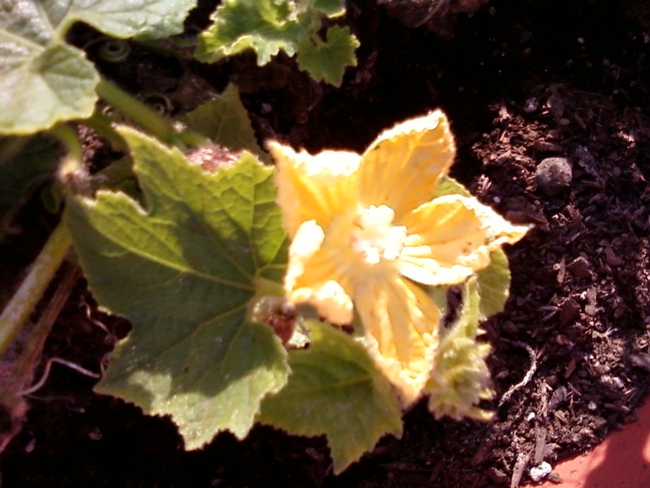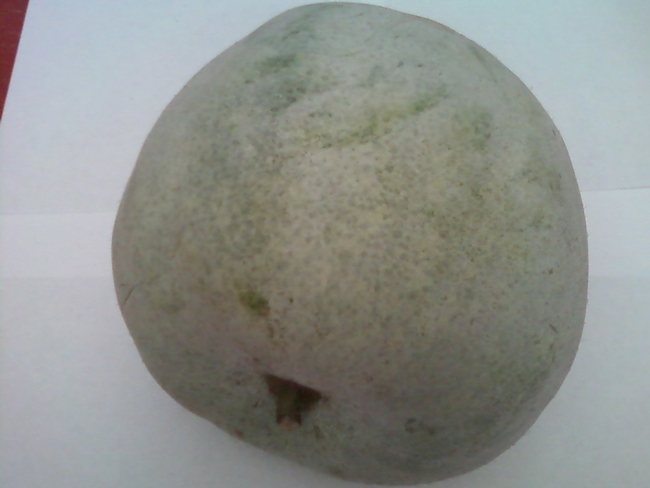The winter melons have recently been harvested. Winter melons, also known as white gourds, winter gourds, or wax gourds are part of the cucurbit family. An annual vine plant, its vine will spread up to fifteen feet.
Winter melon plants (Benincasa hispida) are grown from seed and require a soil temperature above 65 degrees for successful germination, which generally means outdoor planting starting in June. Germination usually occurs within 21 days. The plants can be grown in a variety of soils but do best in well drained fertile, compost rich soils. The plants do require full sun. They also require a fair amount of water while growing, but once the plants are established they are fairly drought tolerant.
Bearing yellow blossoms which require bee pollination, the plants generally mature in approximately 120 days. Winter melons can range from 5 pounds to 50 pounds depending upon the cultivar, but most commonly weight between 5 to 20 pounds. Cultivars include small round, oblong, and huge round winter melons. When mature, the winter melons develop a white waxy coating. Mature winter melons with a good white waxy coating can easily be stored for up to six months or even more in a cool dry area.
Immature oblong winter melons that have not yet developed a white coating should not to be confused with the bitter melon (Momordica charantia) that can often be seen in farmer’s markets. Unlike the bitter melon, winter melons have a mild sweet taste. The melon flesh is used in soups, most often cubed and cooked in a clear broth. It is also frequently boiled or baked and eaten alone, or mixed with other vegetables.
A specialty vegetable, winter melons can be found growing in some home gardens across California. Native to Asia, winter melons are commonly grown in Hawaii due to the ideal climate and local culinary demand.
Attached Images:

